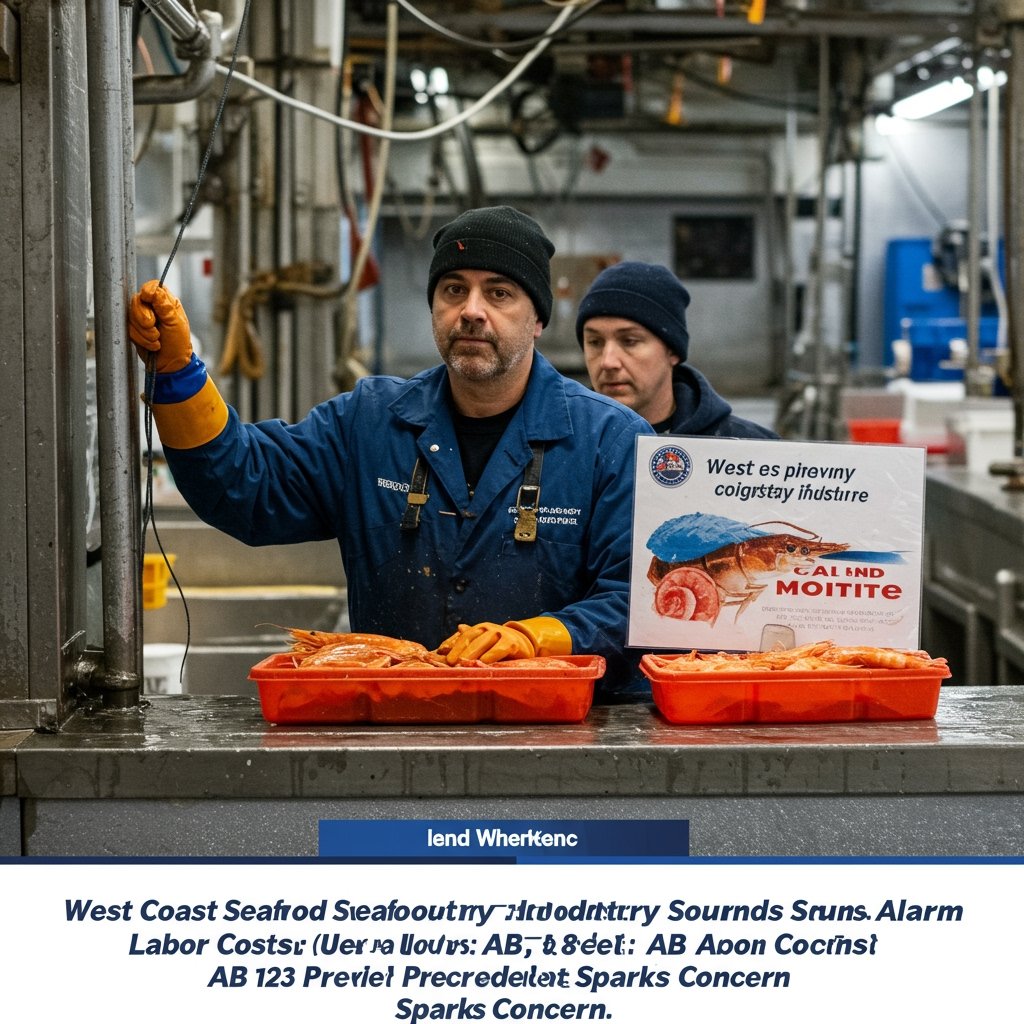West Coast Seafood Industry Navigates Rising Labor Cost Fears Amidst Legislative Scrutiny
The vibrant and economically vital West Coast seafood industry, stretching across the coastal states of California, Oregon, and Washington, finds itself at a critical juncture. Fishery owners and seafood processors throughout this region are voicing significant concern regarding the potential ripple effects of recent state-level labor legislation. At the heart of this apprehension is legislation like California’s Assembly Bill 123 (AB 123), a measure initially focused on enhancing minimum wage standards and benefits for agricultural workers.
While AB 123 directly targets the agricultural sector, industry leaders within the seafood realm fear the precedent it sets and the potential for similar mandates to be applied to their distinct workforce populations: fishing boat crews and processing plant employees. The unique operational structure, economic model, and seasonal nature of the seafood industry, proponents argue, make a direct application of frameworks designed for land-based agriculture economically challenging, if not untenable, for many businesses.
The Precedent and Potential Impact
Assembly Bill 123 in California represents a broader legislative trend towards elevating worker compensation and benefits. For the seafood industry, the core concern is that the principles and specific requirements of such legislation, if extended or replicated, could dramatically alter their cost structures. Applying mandated minimum wage increases, stricter overtime rules, or expanded benefit packages designed for year-round agricultural employment to the often highly variable and seasonal work of fishing and processing is seen as a potential mismatch.
Industry leaders warn emphatically that imposing significantly higher labor costs could lead to a substantial increase in their overall operational expenses. This financial burden, they contend, would inevitably filter down the supply chain. The likely outcome, according to these stakeholders, would be higher prices for consumers at the retail level, potentially making domestically sourced seafood less competitive compared to imported products from regions with different labor cost structures.
Furthermore, increased costs could force businesses to scale back operations, reduce staffing levels, or even exit the market entirely. This would not only impact jobs but could also consolidate market power, potentially harming coastal communities reliant on the decentralized network of fishing boats and processing facilities.
Industry Organizations Mobilize
In response to these potential challenges, key industry representative bodies are actively engaging with state legislatures across California, Oregon, and Washington. The Pacific Coast Federation of Fishermen’s Associations (PCFFA), representing the interests of independent fishermen, and the West Coast Seafood Processors Association, advocating for processing businesses, are at the forefront of these efforts. Their objective is clear: to secure exemptions from or advocate for alternative, tailored legislative frameworks that better accommodate the specific realities of the seafood sector.
These organizations are emphasizing the critical differences between seafood harvesting/processing and traditional agriculture. Fishing is inherently subject to unpredictable natural factors such as weather conditions, stock availability, and migration patterns, leading to significant fluctuations in catch volume and work duration. Processing often operates under intense, short-term peaks driven by harvest seasons, requiring highly variable staffing levels. They argue that standard wage and hour regulations designed for stable, predictable work environments are ill-suited for this volatility.
Arguments for Exemption and Industry Vulnerability
central argument put forth by the PCFFA and the West Coast Seafood Processors Association is that mandated, inflexible wage increases could disproportionately affect small family-owned businesses that constitute a significant portion of the West Coast seafood infrastructure. These operations often run on thin margins, heavily dependent on successful fishing seasons. A substantial, fixed increase in labor costs could erode profitability to the point of unsustainability, potentially forcing closures or sales to larger entities.
The organizations also highlight the threat to the viability of certain fisheries that are critical to the regional economy and cultural heritage. Some fisheries, already facing challenges from environmental regulations, market dynamics, and international competition, may become economically unfeasible if labor costs rise significantly. This could lead to the loss of specific fishing activities, impacting biodiversity management efforts tied to active fisheries and disrupting the supply of popular regional seafood products.
They are lobbying for legislative solutions that acknowledge the seasonal and unpredictable nature of their work, perhaps through adapted wage structures, overtime rules, or carve-outs that reflect industry norms and capabilities while still aiming to support the workforce.
Looking Ahead: Economic Stakes and Policy Decisions
The situation underscores the delicate balance policymakers face in seeking to improve worker welfare while preserving the economic health and competitiveness of vital industries. For the West Coast seafood sector, the outcome of legislative discussions in California, Oregon, and Washington holds significant economic stakes.
Industry leaders remain committed to working with legislators to find solutions that support both the workforce and the long-term viability of their businesses. However, the shadow of potential significant cost increases, spurred by the precedent of legislation like AB 123, continues to fuel uncertainty across docks and processing plants, raising concerns about the future accessibility and affordability of locally harvested West Coast seafood for consumers.



















